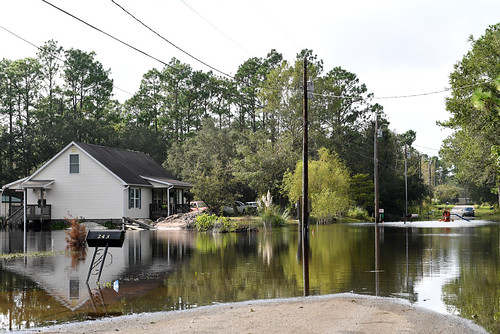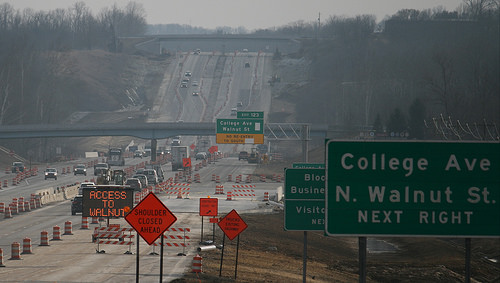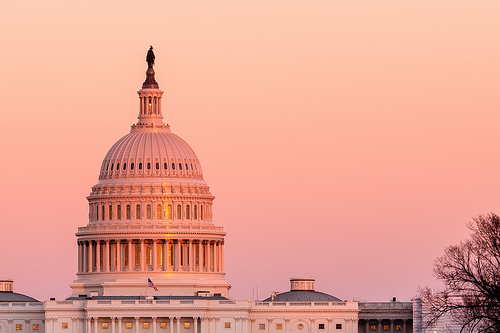The Environmental Protection Agency (EPA) is continuing its renewed reviews of asbestos products, and has just issued a requirement that “discontinued” uses receive new review and approval before they can re-enter commerce in the United States. Formally, EPA has issued a Significant New Use Rule (SNUR) covering these products (I wrote about the SNUR proposal here).
Read MoreAudit, Compliance and Risk Blog
EPA Requiring Notice and Review Before Lapsed Uses of Asbestos Can Be Reintroduced
Posted by Jon Elliott on Tue, May 07, 2019
Tags: Health & Safety, Environmental risks, Environmental, EPA
If You’re In A Flood Zone, Your Insurance Options May Be Changing
Posted by Jon Elliott on Tue, Apr 16, 2019
Millions of people live and work in flood-prone areas, and rely on federal insurance to facilitate their activities. The Federal Emergency Management Agency (FEMA) administers the National Flood Insurance Program (NFIP), under which FEMA defines which flood-prone areas qualify for insurance. In March, FEMA announced plans to change its definitions and underwriting; meanwhile legislation has been introduced in Congress to change NFIP. Depending how these changes turn out, thousands of locations will gain or lose eligibility, and the costs of NFIP insurance could change considerably. As climate change exacerbates the likelihood and severity of floods, the importance of these changing provisions grows – for participants and for the general tax-paying public who often end up subsidizing them.
Read MoreTags: Business & Legal, Environmental risks, Environmental, Insurance, Insurance Claims
EPA’s New Chemical Review Priorities Should Encourage User Reviews Too
Posted by Jon Elliott on Tue, Apr 09, 2019
The Environmental Protection Agency (EPA) has just proposed to assign chemical review priorities for 40 chemicals, as required by the 2016 Amendments to the Toxic Substances Control Act (TSCA; the “Frank R. Lautenberg Chemical Safety for the 21st Century Act”). As required by the 2016 Amendments, the proposal identifies 20 high priority chemicals for evaluation within three years, and 20 low priority chemicals that do not require further evaluation. Once each evaluation is completed, EPA is to determine appropriate regulatory requirements. Organizations that manufacture, process or use any of these chemicals should follow the rulemaking and evaluation process(es), and consider possible substitutes in order to reduce hazards and possible regulatory changes after completion of each relevant evaluation.
Read MoreTags: Environmental risks, Environmental, EPA, Hazcom, tsca
The Environmental Protection Agency (EPA) has completed a long review, and reaffirmed the primary National Ambient Air Quality Standard (NAAQS) for oxides of sulfur (SOX; usually measured as sulfur dioxide (SO2)). This is the first review of the primary SOX NAAQs since 2010 (primary standard – EPA did not review the secondary SOX NAAQS established in 2012).
Read MoreTags: Environmental risks, Environmental, EPA, Greenhouse Gas, ghg, SOX, CAA
EPA Massively Updates National Chemical TSCA Inventory Database
Posted by Jon Elliott on Tue, Mar 26, 2019
The Environmental Protection Agency (EPA) has just made massive updates to the largest national data base of chemical information, the TSCA Inventory. Since 1976, the Toxic Substances Control Act (TSCA) has provided EPA with broad authorities to collect information about chemical substances in commerce in the U.S., including new chemicals that manufacturers and importers hope to bring into commerce. Information about all these substances is collected in the TSCA Inventory.
Read MoreTags: Environmental risks, Environmental, EPA, Hazcom, tsca
On March 11, the Trump Administration issued its budget proposal for federal Fiscal Year (FY) 2020 (October 1, 2019 through September 30, 2020), entitled “A Budget for a Better America: Promises Kept. Taxpayers First.” The proposal includes a 31% cut in the Environmental Protection Agency (EPA) budget, from $8.28 billion in FY 2019 (under a Continuing Budget Resolutions rather than a fully-new federal budget), to $6.07 billion for FY 2020, with corresponding personnel cuts from 14,376 full-time-equivalent employees (FTE) to 12,415. (these are numbers for EPA in the government-wide budget from the Office of Management and Budget (OMBB) summary of the entire budget proposal, and EPA provides additional details on its own website).
Read MoreTags: Business & Legal, Environmental risks, Environmental, EPA
Another Round of EPA and Corps of Engineers Proposals to Redefine “Waters of the United States”
Posted by Jon Elliott on Tue, Feb 26, 2019
On December 11, 2018 the Environmental Protection Agency (EPA) and the U.S. Army Corps of Engineers (Corps) jointly proposed to revise their regulatory definitions of “waters of the United States”, applying authority under the Clean Water Act (CWA). CWA does not define this term clearly, so after decades of rulemakings and litigation, it remains in dispute. Generally, Democratic presidents and the judges they appoint tend to support geographically and semantically broad applications, while with Republican presidents and the judges they appoint tend to take narrower views. The latest proposal would narrow the definition, reversing Obama-era rules adopted in June 2015, and presently in effect in 22 states based on the present status of ongoing judicial appeals (I summarized the 2015 rules, and the litigation leading up to them here and the Trump-era EPA’s 2017 proposal to roll back the 2015 revisions here). The agencies characterize this narrowing as an increase in certainty for stakeholders, accomplished by eliminating some of the site-specific discretion that the 2015 rules provided to permit writers. Because of the government shutdown, this latest proposal was not published in the Federal Register until February 14, 2019.
Read MoreTags: Environmental risks, Environmental, EPA, effluent, clean water
If You Want Everyone To Know You’re A Transparent and Sustainable Company, Delaware Can Help
Posted by Jon Elliott on Tue, Feb 19, 2019
When companies claim they’re reducing their environmental impacts, how does anyone distinguish actual improvements from greenwashing? A growing number of national and international nonprofits and industry trade associations offer benchmarks and standards that companies can subscribe to, and third parties offer their services to evaluate and validate claims. Effective October 1, 2018 the state of Delaware has added a governmental layer, which Delaware companies can use to submit information and claims under penalty of perjury in order to gain formal state acknowledgement. The state claims this is the first such law.
Read MoreTags: Business & Legal, Environmental, sustainability, corporate social responsibility, directors, directors & officers
California Requires Pharmaceutical and Sharps Waste Stewardship
Posted by Jon Elliott on Tue, Jan 29, 2019
Beginning January 1, 2019, a new California law establishes extensive requirements for proper management of waste pharmaceuticals and “sharps.” These new provisions complement – but aren’t actually well-connected to -- medical waste management requirements (I outlined typical state-based requirements here), and workplace provisions to protect workers from “bloodborne pathogens” that may be present because of health and medical procedures and the wastes they generate (I discussed OSHA’s “BBP” Standard here). The rest of this note summarizes these new requirements, adopted by Senate Bill (SB) 212 (Jackson).
Read MoreTags: Health & Safety, California Legislation, Environmental risks, Environmental, Hazcom, pharmaceuticals
EPA Will Aggregate “Substantially Related” Activities When Considering “Project” Thresholds For Pre-Construction Permit Review
Posted by Jon Elliott on Tue, Jan 15, 2019
If you’re contemplating significant changes at a facility that’s regulated as a “major source” under the Clean Air Act (CAA), you’d better figure out whether those changes will “modify” the source enough to trigger significant pre-construction review and permitting by the US Environmental Protection Agency (EPA) or its state or local delegee. The likely answer to questions like yours has changed with CAA amendments and regulations over the decades. EPA has just changed them again, after ending a decade long year delay of a regulatory “interpretation” published in the last week of George W. Bush’s presidency, and stayed by the Obama-era EPA throughout his presidency, and now reaffirmed and activated by the Trump-era EPA.
Read MoreTags: Business & Legal, Health & Safety, Environmental risks, Environmental, EPA










